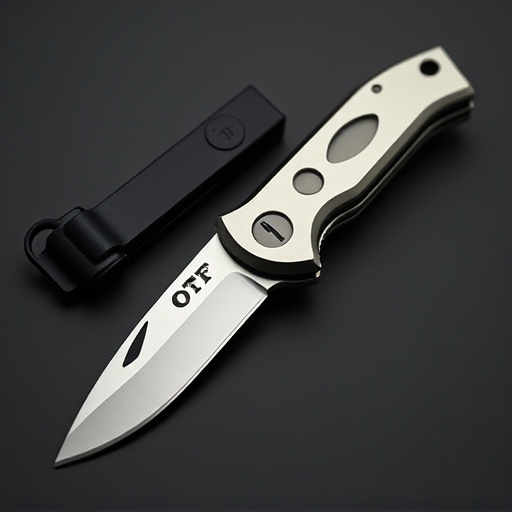OTF (Out-the-Front) automatic knives provide swift blade deployment, appealing to outdoor adventurers, military, and self-defense enthusiasts. These innovative tools offer a compact design, smooth operation, and various styles from rugged serrated edges to sleek everyday carry options. Evolving from 1970s technology, modern OTF knives feature advanced materials and precision engineering, making them versatile status symbols favored for their cutting-edge functionality in a compact package.
“Unveiling the world of OTF (Out-the-Front) automatic knives, a revolutionary concept in blade design, offers a blend of precision and versatility. This compact yet powerful tool has evolved from its tactical roots to cater to various needs, from military applications to everyday carry. In this comprehensive guide, we’ll explore the mechanics behind these innovative knives, their diverse types, and the advantages they bring, while also delving into essential safety considerations for users. Discover why OTF automatic knives are a game-changer for those seeking efficient cutting solutions.”
Understanding OTF (Out-the-Front) Automatic Knives
OTF (Out-the-Front) automatic knives are a unique and innovative category of folding knives designed for efficient and swift deployment. These knives feature a sliding mechanism that allows the blade to extend rapidly from the handle, offering a tactical advantage in various situations. The term ‘OTF’ refers to the blade’s ability to pop out from the front of the handle, providing quick access without the need for opening or locking mechanisms commonly found on traditional folding knives.
This type of knife is particularly appealing to outdoor enthusiasts, soldiers, and those who prioritize self-defense due to its speed and compact design. The mechanism ensures a smooth and reliable extension, making it user-friendly and versatile. OTF automatic knives come in various styles, from tactical models with serrated edges to elegant, everyday carry options, catering to diverse user preferences and needs.
– Definition and basic mechanism
An OTF (Out-the-Front) automatic knife is a specialized tool designed for quick and efficient deployment, featuring a blade that extends from a handle when a trigger mechanism is activated. This innovative design offers several advantages over traditional fixed-blade knives, making it popular among outdoor enthusiasts, tactical professionals, and everyday carry enthusiasts.
The basic mechanism involves a complex system of springs, gears, and levers. When the user activates the trigger, usually by pushing or flipping a button on the handle, internal springs are released, causing the blade to rapidly slide forward from the knife’s body. This swift action ensures that the user has immediate access to a sharp blade without having to manually open it, making OTF knives particularly useful in situations requiring quick cutting or self-defense.
– History and evolution of OTF knives
The history of the Out-the-Front (OTF) automatic knife dates back to the 1970s when designers and engineers sought to create a versatile tool that combined the functionality of a knife with the speed and ease of deployment of a folding blade. This innovative concept quickly gained popularity among outdoor enthusiasts, military personnel, and everyday carry advocates. Early OTF knives were mechanical, often employing springs and levers to automatically extend and retract the blade, making them reliable but somewhat complex in their operation.
Over time, the evolution of OTF technology has led to a wide array of designs, from tactical models with enhanced durability and locking mechanisms to sleek, minimalist EDC (Everyday Carry) knives focusing on speed and discreteness. Modern OTF automatic knives often incorporate advanced materials, precision engineering, and innovative blade designs, ensuring they are not only efficient tools but also status symbols in the knife community. With their versatility and convenience, these knives have become a preferred choice for those who demand cutting-edge functionality in a compact package.
